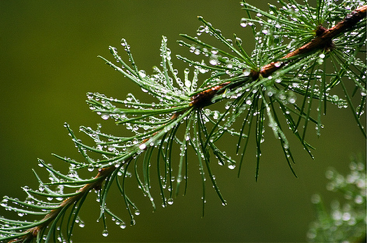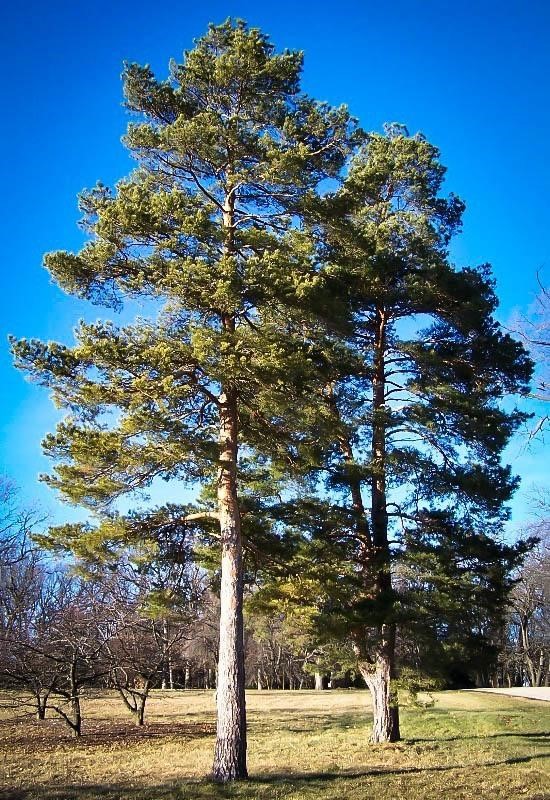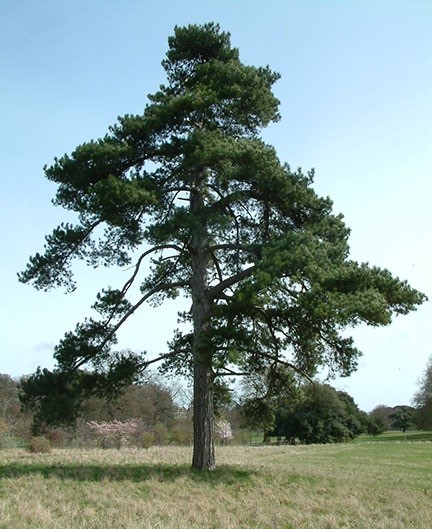Characteristics and Climate
The angles between the 50° and 60° N of the equator is the region where coniferous forests are found. These forests are known as evergreen coniferous forests that consist of trees equipped with needles like leaves. These are also known as Taiga forests. The most common trees found in this region are pine, spruce, and fir. Reindeer, hares, and wolves are the animals that are found here.
In the northernmost part of these regions, the temperature remains below 10°C.
Also, as we move in the north, the height of the trees become short, and these are less dense. This is due to the shorter growing season in this area. The winters are extremely cold, and the temperature can drop as low as – 30°C. In the southern part of these forests, the trees tend to be larger and dense and merge with the trees of deciduous type. Deciduous trees are the trees that lose their leaves with the changing season. In this region, the temperature tends to rise above 20°C in the summer and can drop below – 15°C in the winter season. The precipitation in this area of coniferous forest is around 300-900 mm and in winters you will witness snowfall.
Adaptations of Vegetations
- Coniferous trees can protect themselves from cold and extreme climate due to the presence of thick bark. They are cone in shape and have very flexible branches which help them to manage and survive even in the time of heavy rainfall and let the snow slip down.
- The pine is one of the toughest covering found in plants that protect the seeds during the harsh and cold winters.
-

- The leaves which are in the form of thin waxy needles protect the plant from
water loss. - The trees are evergreen in the sense that the leaves (needles) of these trees can make their food (photosynthesis) whenever the sunlight is available to them.
The dense forest protects the heat and makes the region warm in winters.
The soil in the Coniferous forests
- Lack of decomposition and weathering activities due to cold climate make the soil shallow. These are acidic in nature. The acidic nature of the soil is due to the leaching process initiated by rainfall. The soil is also poor in nutrients and hence not very fertile.
- The slow decomposition of needles makes the litter layer thick.
- The layers in the soil are cut out in clear boundaries because only a few organisms are present to decompose the dead and decayed.
- The less decomposition also means that the humus layer will be thin.
The roots of the trees are shallow as they do not need to go deeper in search of water. - Podsol is the typical layer of soil that is ash grey and is present above the red layer that is rich in iron.
Coniferous forests in the UK
Coniferous trees are found throughout the UK. Around more than 300,000 hectares are found in England while Scotland and Wales account for more than 900,000 hectares and 106,000 hectares respectively. After the first world war, conifer planting increased, and a forestry commission was also set up around this time to ensure the conservation of timber plants. A large area of the less fertile region was used for this purpose. Regions around Kielder and Thetford were used and also some sandy areas near the sea like Holkham in Norfolk and many large extents of the region in Scotland which also included some natural peatlands were reserved for conifers.
Coniferous trees form a dark rectangular block of uniform color.
Yew Juniper and Pine are the native conifers of the UK. Other imported species that gradually became the part of these forests were Douglas Fir, Sitka Spruce, and Corsican Pine and Larch nature. , even though these were deciduous.
Let’s take a look at these major tree species that are found in the UK.
● Scots Pine – This species is planted in the number of regions in the UK and is quite an attraction of these regions. These trees have a very long life and can live for a minimum of 150 to 200 years. The bluish-green needle type of leaves gives an aesthetic look when merges with the orange color of bark. These trees are the habitat of tit family, long-eared owl, and goldcrest. The flowering and cone production is regular and thus also helps in the spreading of these trees naturally. These are also used in the recreation of the Caledonian Forest.
● Douglas Fir – The scientific name of this tree is Pseudotsuga menziesii which is the originally the species of North America. The leaves that are in the form of needles smell like crushed or rubbed oranges. These are quite big in height. More than 100 meters of height is seen in these trees. Also, these are very valuable as timber. Picea sitchensis (Sitka Spruce) is a conifer know for growing quickly and can reach up to the height of 50 meters. This tree is native to North America. These trees grow in the upland regions and the moist and or acidic soil. The blue tinge on the needles make them beautiful, and the branches are generally pointing upwards.

● Corsican pine – This tree grows very fast and has straight trunks. These are much more productive than other non native trees like Scot Pine. But, these are less useful for wildlife living in the area. These trees also have a long life and can grow to a large extent.
Picture reference – Douglas Fir , Scots Fir, Corsican Pine , Coniferous forest, Leaves in Coniferous trees
Frequently Asked Questions
What are coniferous forests, and where are they typically found in the world?
Coniferous forests are dominated by cone-bearing, needle-leaved trees like pine, spruce, and fir. They are typically found in high-latitude and mountainous regions.
How do coniferous forests adapt to cold climates, and what are some characteristic features of these ecosystems?
Coniferous trees have needle-like leaves to reduce water loss, and their shape allows them to shed snow easily. These forests often feature acidic soils and wildlife adapted to cold conditions.
Explain the ecological importance of coniferous forests and their role in carbon storage.
Coniferous forests serve as vital habitats for wildlife, help mitigate climate change by storing carbon, and play a role in maintaining global biodiversity.
What are some common threats to coniferous forests, and how can conservation efforts protect these ecosystems?
Threats include deforestation, wildfires, and invasive species. Conservation efforts involve sustainable logging practices, fire management, and protecting critical habitats.
How do coniferous forests contribute to local economies and provide resources for human use?
Coniferous forests are sources of timber, paper, and resin products, supporting industries and providing economic benefits to communities in forested regions.







